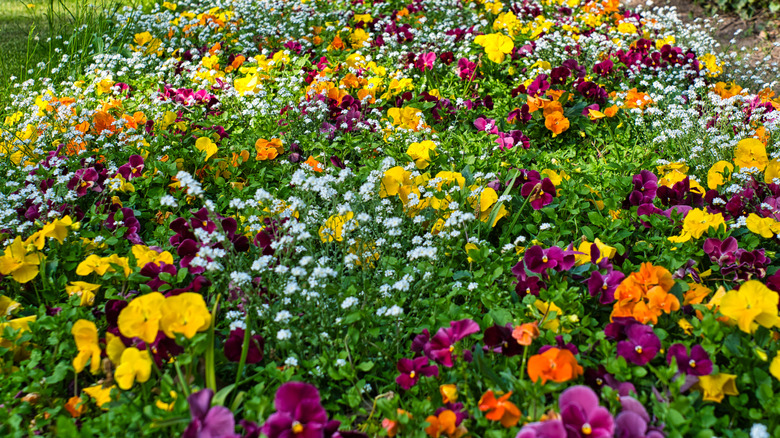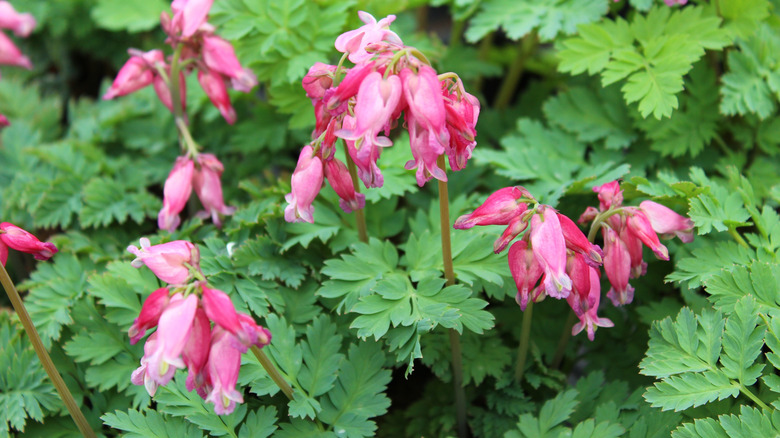Enhance Your Garden Beds With These Long-Lasting Flowers With Two-Toned Blooms
If you love bleeding hearts (Dicentra spectabilis) but lament the main problem with growing these heart-shaped flowers — namely, their sensitivity to summer heat — you will be happy to know there is an alternative. Fern-leaf bleeding heart (Dicentra 'Luxuriant') is a much longer-living version of this lovely plant. While it still prefers part-shade, fern-leaf bleeding heart is more sun- and heat-tolerant than other varieties of this garden favorite. It also has a more compact growing habit, making it a great addition to any garden bed.
Fern-leaf bleeding hearts have more elongated flowers than their more well-known cousin, but still prefer humus-rich, fertile soil that is well-drained. To keep these bleeding hearts happy in sunnier sites, you will need to keep the soil consistently moist. If you can do that, they will produce pinkish-red blooms, sometimes tinged with hints of white, from May through early fall in cooler climates. In hotter areas, the blooms may subside during the hottest days of summer and then make a comeback for the fall. These plants grow 12 to 15 inches tall and up to 18 inches wide. Their gray-green leaves provide a lovely backdrop to the colorful flowers. Even if the blooms fade during the summer heat, the attractive foliage will remain and can act as a ground cover during this period.
Getting the best results from fern-leaf bleeding hearts
The fern-leaf variety of bleeding hearts can be a great addition to any garden, but it's an especially good option for tricky, shady spots. If you're looking for a woodland plant to add color to a foliage-heavy shade garden, consider this variety. For more color, pair it with one of these 14 gorgeous astilbes to plant in your shade garden. Generally, bleeding hearts work well at the edge of the garden as they produce flowers on stems of varying heights which drape gracefully. You'll want to see as much of the plant as possible.
If, however, you're planting fern-leaf bleeding hearts in a sunnier spot than bleeding hearts traditionally occupy, remember you may need to frequently water them and keep the soil consistently moist during the summer. Otherwise, these are low-maintenance plants. You can cut back stems after flowers die to encourage reblooming. Other than the occasional snail or slug, they do not suffer from pest problems, and even deer and rabbits tend to steer clear of bleeding hearts. Bees and butterflies, however, love these plants. So, if you're starting a pollinator garden, fern-leaf bleeding hearts are a great option, especially for slightly shady patches. They are easily divided after the plants die in the fall so you can fill the garden with them over time without spending too much of your garden budget.

